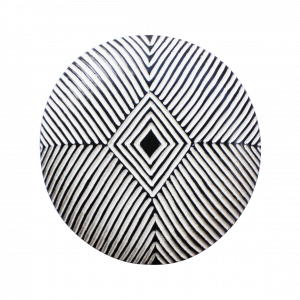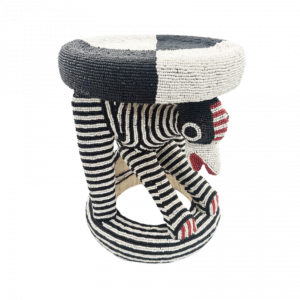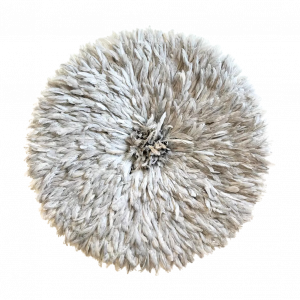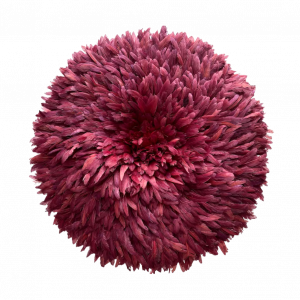Bamileke Beaded Head & African Beadwork

-
Shield
Bamileke shield Hiro
$114,00 – $214,00Price range: $114,00 through $214,00 This product has multiple variants. The options may be chosen on the product page -
Stool
Royal Beaded Bamileke Stool Bird Black Red Stripes
$448,00 – $896,00Price range: $448,00 through $896,00 This product has multiple variants. The options may be chosen on the product page
The Bamileke beaded head originates from African beadwork, an ancient craft practiced for centuries. This meticulous art form requires hours of dedicated labor to create each piece, often showcasing vibrant colors, geometric patterns, and symbolic motifs that reflect the cultural heritage of their creators. Beyond their aesthetic appeal, African beadwork serves as a powerful symbol of cultural preservation in the face of globalization and assimilation into Western cultures.
Origins of African Beadwork
Beadwork—the art of adorning objects with threaded beads—is prevalent among various sub-Saharan African ethnic groups, notably the Bamiléké of Cameroon, who have elevated it to a distinct art form integrated into their ancestral customs. The tradition of creating and using beads is ancient; faience beads discovered in Egypt date back to 1802-1450 BCE. Beyond Egypt, several African countries have rich beadwork traditions. For instance, Aggry beads—a type of decorated glass bead—are used by Ghanaians and other West African nations to craft necklaces and bracelets. In Mauritania, Kiffa beads made from powdered glass represent a beadwork tradition that may date back to 1200 CE. After the last traditional Kiffa artisans passed away in the 1970s, a group of Cameroonian women revitalized this African craft.
Bamiléké Beaded Objects
Since the early 20th century, women known as “amazons” have progressively and methodically embraced the art of bead and cowrie shell work in Cameroon’s Grassfields. This development led to a bead art incorporating cowries and other local vegetal elements, such as certain species of dried wild beans, the dry husk of raffia fruit, or reed seeds. These Bamiléké beadworkers procure beads and cowries from regional village markets. Some form associations or purchasing cooperatives to obtain materials at favorable prices. They collaborate with sculptors and basket makers, commissioning items to adorn with beads: terracotta heads (for beaded heads), statues, masks, stools, gourds, and baskets.
The African Beaded Head and Its Creation
The creation of the Bamileke beaded head mirrors that of other beaded objects. It begins with a terracotta sculpture (fired clay). The beadworker covers each object with an appropriate fabric, then uses fine needles and threads to string the beads and delicately sew them onto the fabric covering the object. This process results in original artistic compositions that express a remarkable aesthetic. In Cameroon, Bamiléké kings and dignitaries are the primary patrons of these highly prized masterpieces. Increasingly, tourists also covet these cultural products as souvenirs of their visit to Cameroon.
African Craftsmanship: An Economic Opportunity
Deeply rooted in culture, African beadwork and craftsmanship help maintain traditional values while offering economic opportunities to artisans. By selling their creations at markets or through online stores like Karioska, Etsy, or eBay, these artisans can earn income while staying true to traditions and passing knowledge down through generations. This type of artisanal production provides not only financial stability but also the pride of contributing to the preservation of their heritage—something that could be lost due to widespread cultural changes brought about by globalization over time if this industry did not exist.
A limited number of mothers manage to earn a decent living from the modest income generated by selling beaded and cowrie-adorned items at local markets. These women patiently work in their kitchens and huts, often after returning from the fields. Beadwork and cowrie work have become essential activities for them. With dedication, determination, and sometimes resignation, they create their works and store them. Often, it is years later that they find buyers.
Cultural Diversity
Another reason to celebrate African beadwork lies in its ability to provide insight into different cultures across Africa, allowing us to explore various ways of life without leaving our homes. This not only enables individuals to learn about other societies but also helps bridge gaps between countries that might otherwise remain isolated due to political divisions. Ultimately, this leads to greater understanding and respect across borders than ever before possible.
-
Shield
Bamileke Shield Fibo
$114,00 – $214,00Price range: $114,00 through $214,00 This product has multiple variants. The options may be chosen on the product page -
Juju Hat
Juju hat gray
$132,00 – $235,00Price range: $132,00 through $235,00 This product has multiple variants. The options may be chosen on the product page -
Juju Hat
Juju hat burgundy
$132,00 – $235,00Price range: $132,00 through $235,00 This product has multiple variants. The options may be chosen on the product page









